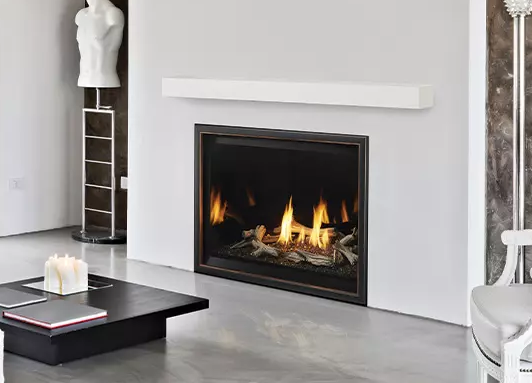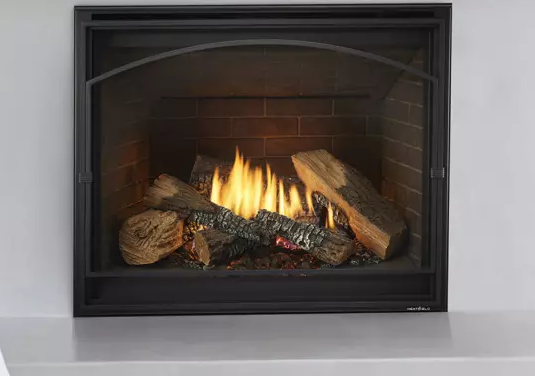Turning on a gas fireplace can be intimidating, but it’s not as hard as you think. First, you’ll want to be sure what type of fireplace you have. There are three kinds: 1) direct vent fireplaces 2) vented gas logs 3) unvented gas logs. The process for turning on will depend on which type of fireplace you have. We’ll briefly explain each type below.
For #1) direct vent fireplaces, you’ll want to first determine if you have an electronic ignition or a standing pilot (millivolt) system. Your fireplace instruction manual should tell you this. If you don’t have your manual, you can get the model number off the small silver plate on the bottom of the fireplace floor (you might have to remove the screen front to find it). With your model number, you can find the manual online. If you can only find the model number, typically standing pilot systems have a “V” towards the end of the model number (for millivolt) and electronic systems typically have an “I” (for intermittent pilot). For electronic ignition systems, the lighting process is very simple. Using your wall switch or remote, just turn the fireplace to “on”. After you do that, you should hear a faint sparking sound as the unit sparks for the pilot light to come on. After 10-30 seconds, the whole burner will light. Don’t be worried if you see condensation on the glass; that is normal and will burn off in a few minutes. When you’re done, just turn the fireplace to “off” and it’ll turn both the burner and pilot off.
Most #2) vented gas log fireplaces are standing pilot. If your pilot is off, you’ll need to relight your pilot. If you don’t know how to do that, we explain it here. Once the pilot is lit, you can either use your remote or your hand (depending on whether your system is remote controlled) to turn the valve to the “on” position. Be sure to make sure your chimney is open before you turn the fireplace on (you should be able to see an open chimney if you stick your head into the fireplace). Vented gas log valves typically also allow for variable operation, meaning that you can turn the flame up and down proportionally to how much you turn the control knob.
Vent-free #3) log sets are similar to vented gas logs, with the main difference being that they can be operated with the damper shut to produce heat. Most vent-free gas logs are standing pilot, so if your pilot is off, you’ll need to relight your pilot. If you don’t know how to do that, we explain it here. Once the pilot is lit, you can either use your remote or your hand (depending on whether your system is remote controlled) to turn the valve to the “on” position. When you operate your vent-free (also called unvented gas logs) for the first time each year, check the logs for soot. If there is soot, this is a problem. You should get the manual and make sure the logs are arranged exactly as specified in the manual. Sooting means there is incomplete combustion happening (from impingement of the flame), which will produce excess CO and other byproducts, which are unsafe.
The information here is meant as a general explanation only and not intended to take the place of your appliance manual. If you don’t feel comfortable working on gas appliances, call an expert. If you ever smell gas or think you have a leak or a problem, get help right away.
Previous Next


